OF ALL THE CONTRADICTIONS IN HUMAN BEHAVIOR, our relationship with nature is surely the most contradictory. We can’t decide if we’re part of it or apart from it. We love it and hate it to death. We abuse it heartlessly and defend it ferociously. We annihilate species, tear down mountains, poison oceans and rivers, and clear-cut forests even as we fight with all our strength to save them.
How can we understand our place in nature, when our place is so complex and uncertain? How can we expect people to care about an endangered bird or an imperiled ecosystem, when there are bills to pay and classes to attend and retirement to worry about?
I don’t know. The older I get the less certain I am that there are easy answers to such questions.
But I know this, at least: Most people, most of the time, are led not by their minds, but by their hearts.
For the first time in human history, more of us live in cities than in the countryside. It’s not surprising, then, that our children have fewer opportunities than ever to explore woodlots and creek bottoms and other pockets of wild nature that were once found near almost every neighborhood. And with all the indoor diversions available, more and more kids would rather stay in their houses anyway. The result is an imminent “extinction of experience,” in the words of ecologist Robert Michael Pyle, and “nature deficit disorder,” according to writer Richard Louv. We seem to be creating generations of young people who are increasingly uncomfortable outdoors and increasingly less interested in the environmental legacies they’ll one day inherit.
Already it’s an old story, and most of us can probably come up with examples to illustrate it. During my own work, which, for the past couple decades has included studying and writing about the nature, culture, and environmental health of the Great Lakes, I’ve seen many examples of what is wrong and have met many people who are battling to make it right. In inner-city Milwaukee, for instance, an elementary-school teacher told me that half his students have never seen Lake Michigan—and most of them live less than a mile from it. Another teacher, Sandy Bihn, who is the Lake Erie Lakekeeper, said that she has spoken to hundreds of groups of students and adults in classrooms and public gatherings near the shore of Lake Erie, from Detroit to Sandusky. She always begins each session by asking how many people in the audience have ever walked on the beaches of Erie, swum in it, fished in it, or boated on it. The results are consistent, she says: five percent raise their hands.
How can we hope that the other 95 percent will care enough to take over the job of protecting and restoring the Great Lakes? And if they can’t be convinced to care about the enormous and amazing lake in their own backyard, what chance is there that they’ll care about national and global issues?
The time-honored tactic of educators, of course, is to reach into their grab-bags and pull out facts that they hope will dazzle their students and make them care. “As big as the British Isles! Enough water to cover the United States in a lake ten feet deep! Twenty percent of the world’s liquid fresh water!”
But facts can never have a fraction of the impact of simply leading kids to the shore and letting them discover for themselves that they can’t see across to the other side.
Around the Great Lakes, as in so many places, the difficulty is compounded by both a lack of personal experience and a deficiency of knowledge. Americans’ famous ignorance of world geography applies not only to distant places. A friend of mine told me about a 30-year-old woman who works in his office and who lived until she was 18 years old in Escanaba, Michigan, a small city perched on the north shore of Lake Michigan. When he asked her what it was like growing up there, she said it was great, wonderful, and that it was really neat having Lake Superior in her front yard. “You mean Lake Michigan,” my friend said. “No, Lake Superior,” she said. He had to get a map and prove it to her.
A few years ago, a young man riding a personal watercraft ran out of gas on Lake Michigan near Chicago and drifted for a day and a night before he was rescued by the Coast Guard. He was taken to a hospital to be treated for hypothermia, where a doctor noticed that he was also dangerously dehydrated. The doctor, baffled, asked why he didn’t just drink the water. The young man was surprised by the question. He had thought he was on an ocean.
A better education would correct many of those kinds of misunderstandings, of course, and many more serious ones as well, but education requires more than textbooks and maps. Geography remains just lines on paper until the character or spirit of a place is somehow made tangible. Give people the experience of walking a beach or climbing a dune or identifying plants and animals and the experience becomes their own, which makes the place their own, as well. They don’t forget the experience or the sense of ownership, and often they begin to care.
Kids seem to have an innate hunger for this kind of encounter. Their explorations of the neighborhood take them on excursions to the boundaries of what is known and safe—and just a bit beyond—and teach them to navigate independently in the world. And by getting to know their neighborhood, they can start to become involved in it.
That’s the premise behind place-based education programs in many schools and organizations across the U.S. and Canada. One I know about personally is the Inland Seas Education Association in Suttons Bay, Michigan. Since 1989 their staff have taken more than 100,000 kids aboard their school ship and given them hands-on experience with the freshwater ecology of Lake Michigan. And it’s making a difference. Those kids are going home carrying a spark, and sometimes the spark becomes a fire. Not long ago, at Northland College in Ashland, Wisconsin, I met a graduate student who told me that spending a single day on Tom Kelly’s school ship, when she was in sixth grade, inspired her to pursue a career in biology. “Literally,” she said, “it changed my life.”
Getting kids outside is also what Kim Kaufman is doing at the Black Swamp Bird Observatory, on the Ohio shore of Lake Erie. Recently she told me that many of the kids that take school trips to the observatory have never been out of the city. When they step off the bus they immediately cluster around her in the parking lot and at first refuse to set foot in the woods and marshes. One girl asked in a frightened whisper if gorillas lived there. Another said in the haughty tone that only a twelve-year-old can muster, “I don’t do nature.” Yet, at the end of the day, those same children are often in tears because they don’t want to leave.
The lesson is clear. If we’re going to inspire stewards of the natural world, we somehow have to make that world vital to them.
My own experience in doing that is checkered, at best, but I’ve noticed a few things that seem to work. In my books I try to bring places to life with the hope that readers will connect with them, be inspired to learn more about them, and maybe someday come to their assistance.
My wife and I have also tested some ideas on our sons. When they were young we really piled it on. We tutored them in the entire amateur naturalist’s curriculum, from dragonflies to flycatchers, from smallmouthed salamander to largemouth bass. We took them on canoe trips and snowshoe treks, on mushroom hunts, full-moon dunes hikes, and aurora quests. Some of it stuck; some of it didn’t. Both Aaron and Nick grew up to be fearless on computers and a little afraid of spiders, and for a long time they were more inclined to relax with a video game than with a canoe paddle.
Gail and I were bothered by that at first, but in time we became okay with it. We noticed that Aaron and Nick approached their computers with the same spirit they exhibited when they were having adventures outdoors. We live in a part of the world that still abounds in wild, beautiful places, so naturally we urged them to explore those places and nudged them outdoors for at least part of every day. Beyond that the boys dug in their heels—and we hit an impasse. It was our job to guide them in learning as much about the world as possible, and clearly Nintendo and the Web were a significant new part of it. Eventually we concluded that it would do more harm than good—and would probably backfire anyway—if we tried to discourage their interest in the online world.
Children naturally seek adventure, and in our time, when so many neighborhoods lack sidewalks and parks and many others are unsafe, the most ready source of it is often electronic. In the virtual world even very young children are in control of their explorations. They find wonders and make discoveries there as surely as they do when exploring a zoo or a museum or the pond at the frontier of their neighborhood. Our sons moved back and forth so easily between the world of video-games and the natural world outside that we concluded that both were important to their education. Aaron and Nick are grown now and earn their livelihoods using many of the computer skills they learned as kids. And they spend a great deal of their free time outdoors.
I don’t know if we can hope to inspire kids to care about the piping plover and Kirtland’s warbler, about fragile dunes ecosystems and shrinking water resources and accelerating global warming, but I know we have an obligation to try. And I know that some approaches are more effective than others.
Should we teach by example rather than by rote? That seems to work best.
Do people respond better to being led than pushed? Usually.
Will kids follow us to a lakeshore or ocean or river and wade into the water and begin to sense in their guts that everything is linked to everything else and that some of it requires our attention? Sometimes.
Can they be guided toward a deeper appreciation of the world? Definitely.
Albert Camus once wrote that a life’s work is nothing but “the slow trek to rediscover those two or three great and simple images in whose presence the heart first opened.” We can’t expect our children to open their hearts to the same images that shaped their parents and teachers. But if we’re patient, and compassionate, and a little lucky, we can sometimes help them discover the great and simple images of their own.
And when that happens a lot of the other stuff takes care of itself.
-End-
(This essay was originally written as a keynote address for the Great Lakes Stewardship Initiative, a group that assists educators and students to work with and learn about nature, especially in the places where they live. It was later honored with an award from The Web of Life Foundation.)



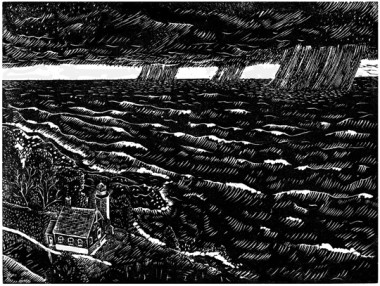
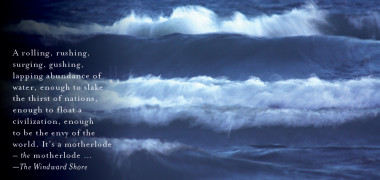


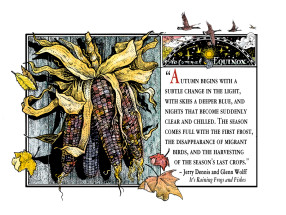
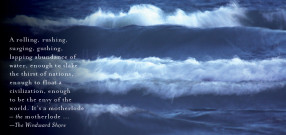
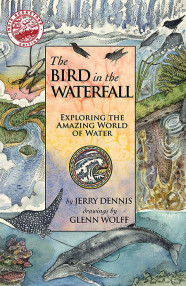
6 Replies